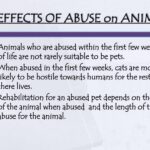Animal cruelty has long been a dark undercurrent in society, often relegated to the shadows of ignorance and indifference. The laws that govern the treatment of animals have evolved over time, but it wasn’t until certain pivotal figures stepped forward that true change began to take root. This article aims to delve deep into the origins of animal cruelty legislation, specifically focusing on the individuals and groups that have championed these vital reforms that changed animal welfare forever. Who were these trailblazers? What motivations drove them? And how did their efforts forge a new path towards compassion and respect for all living beings?
The landscape of animal protection legislation has seen significant metamorphosis since its inception. Initially, the concept of animal rights was virtually nonexistent. Animals were viewed largely as property, lacking any legal standing or consideration of their welfare. This perception began to shift as social reformers, increasingly aware of the moral implications of animal treatment, stepped into the spotlight.
At the heart of this transformation is the awareness-raising that began in the late 19th century and has continued to resonate throughout modern society. Organizations like the American Society for the Prevention of Cruelty to Animals (ASPCA), founded in 1866 by Henry Bergh, played a paramount role in advocating for animals. Bergh’s tireless efforts and relentless passion were instrumental in bringing animal cruelty to public consciousness. He leveraged his social standing and political connections to draft the first animal protection laws, effectively challenging societal norms and igniting a movement that would catalyze substantial legal reforms.
But the story does not end with Bergh alone. Several decades later, the animal welfare movement gained momentum through the contributions of other passionate individuals. Pioneers such as Caroline Earle White and her contemporaries organized efforts to pass more sophisticated animal cruelty laws. White founded the Pennsylvania Society for the Prevention of Cruelty to Animals (PSPCA) in 1867, further emphasizing the need for systematic legal frameworks to protect animals. The shift from passive concern to proactive legal intervention was largely attributable to such advocates who fervently believed that animals deserved better treatment and respect.
As the 20th century dawned, new ideologies about animal rights began to surface. Social awareness was burgeoning, and with it came the understanding that all creatures, regardless of species, possess the intrinsic right to be safeguarded from infliction of suffering. In a world grappling with the horrors of war and oppression, the philosophical underpinnings advocating for the humane treatment of animals found traction. Influential thinkers such as Peter Singer challenged established paradigms, urging society to realize the moral implications of cruelty against non-human beings. His seminal work, “Animal Liberation,” published in 1975, galvanized public support for the anti-cruelty cause, compelling policymakers to reconsider and revise existing laws.
But why was legislation crucial in shifting the narrative surrounding animal treatment? Legal reforms serve as a societal mirror—they reflect our values and ethics. In the context of animal welfare, the introduction of anti-cruelty laws provided a formal recognition of animals as beings deserving protection. These laws not only serve punitive measures for offenders but also act as a deterrent, preventing acts of cruelty before they occur. Gradually, states and territories began to adopt comprehensive animal anti-cruelty statutes, transitioning from mere moral exhortations to stringent legal obligations.
The positive implications of these laws were not merely limited to the framework of animal protection. They forged a cultural shift towards empathy and greater awareness. Communities began to rally around local animal shelters and respond with alacrity to instances of reported cruelty. Education programs sprouted, emphasizing responsible pet ownership and humane practices. The law became a sentinel, standing guard over the rights of animals, while fostering societal engagement and involvement.
In recent decades, legislative advances have expanded to protect even more vulnerable species, including those used in entertainment, experimentation, and agriculture. Initiatives aimed at banning or heavily regulating practices deemed inhumane, such as puppy mills or factory farming, have emerged as reflections of an increasingly humane society. Advocates have relentlessly lobbied for ranching reforms and the humane treatment of animals in scientific research, igniting conversations about speciesism and the ethical implications of animal exploitation.
Despite these advancements, challenges persist. The ever-evolving nature of society means that legislation must continuously adapt to address emerging issues regarding animal welfare. The advent of technology has introduced complexities; from genetic modification to the use of animals in high-tech industries, the demand for updated laws has never been more critical. Additionally, enforcement of already established laws often faces hurdles, whether due to lack of resources or political will.
Nevertheless, the story of animal cruelty legislation is one underscored by hope, perseverance, and unwavering commitment. The champions of this cause—a blend of driven activists, compassionate lawmakers, and informed citizens—have undeniably shifted cultural perceptions and initiated legislative reforms that prioritize animal welfare.
As we contemplate the future, we must ask ourselves: how can we contribute to this momentum? Whether through advocacy, volunteering, or simply raising awareness, the collective responsibility lies with us to ensure that the movement continues to gain traction. Every voice matters in the relentless fight against animal cruelty, and while the legacy of those who drafted these transformative laws stands firm, it beckons us to carry the baton forward into an era of greater compassion, understanding, and humane treatment of all living beings.







